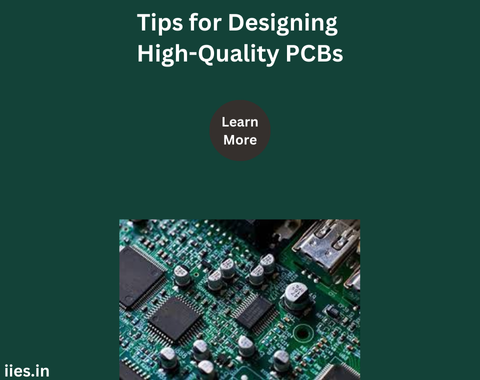
Designing high-quality Printed Circuit Boards (PCBs) is a critical skill for engineers and designers in the electronics industry. A well-designed PCB ensures the reliability, performance, and manufacturability of electronic devices, which is essential in today’s rapidly advancing technological landscape. Here, we explore key theoretical principles and best practices that contribute to high-quality PCB design.
Before beginning the design process, it’s crucial to thoroughly understand the requirements of the PCB, including its electrical, mechanical, and thermal constraints. This understanding helps in selecting the appropriate materials, layer count, and component placement strategy. Defining clear design goals early in the process prevents costly redesigns and ensures the final product meets all specifications.
Component placement is a critical step that significantly impacts the performance of the PCB. Properly positioning components to minimize signal path lengths and reduce electromagnetic interference (EMI) is essential. High-frequency components should be placed close to each other to minimize inductive and capacitive effects, while sensitive analog components should be isolated from noisy digital circuits.
Signal integrity is paramount in high-speed digital designs. Ensuring that signal paths are short, direct, and free from impedance mismatches is key to maintaining clean signal transmission. Careful routing of traces, particularly for high-speed signals, is necessary to prevent reflections, crosstalk, and other issues that can degrade signal quality. Utilizing proper termination techniques and controlled impedance traces helps in preserving signal integrity.
Effective power distribution is essential for the reliable operation of electronic components. A well-designed power distribution network (PDN) ensures that all components receive stable and clean power, free from noise and voltage drops. Utilizing a solid ground plane, decoupling capacitors, and proper trace width calculations are critical practices for minimizing voltage fluctuations and ensuring efficient power delivery.
As electronic components continue to shrink in size while increasing in power density, thermal management has become a critical aspect of PCB design. Excessive heat can lead to component failure, reduced performance, and shortened product lifespan. Incorporating thermal vias, heat sinks, and proper spacing of heat-generating components are important strategies for managing heat dissipation. Additionally, selecting materials with good thermal conductivity and designing for adequate airflow are crucial for maintaining optimal operating temperatures.
Designing a PCB that is easy to manufacture can significantly reduce production costs and time. This involves considering the capabilities and limitations of manufacturing processes, such as minimum trace widths, spacing, and hole sizes. Ensuring that the design adheres to industry standards and guidelines, such as IPC standards, is important for preventing manufacturing defects and ensuring consistent quality.
Before finalizing the design, thorough testing and validation are necessary to ensure that the PCB performs as intended. Simulation tools can be used to model electrical behavior, identify potential issues, and optimize the design. Once the prototype is fabricated, testing for electrical performance, thermal behavior, and mechanical stability is essential. Iterative testing and refinement help in identifying and addressing any issues before mass production.
Clear and comprehensive documentation is a vital part of the PCB design process. Accurate schematics, assembly drawings, and bill of materials (BOM) are essential for successful manufacturing and assembly. Detailed documentation ensures that the design can be reproduced accurately and helps in troubleshooting any issues that may arise during production or in the field.
The field of PCB design is constantly evolving, with new materials, components, and design methodologies emerging regularly. Staying updated with the latest trends and technologies, such as high-density interconnects (HDI), flexible PCBs, and advanced simulation tools, is crucial for designing cutting-edge electronics. Continuous learning and adaptation ensure that designers can create PCBs that meet the demands of modern electronic devices.
In conclusion, designing high-quality PCBs requires a deep understanding of various theoretical principles and best practices. By carefully considering factors such as component placement, signal integrity, power distribution, thermal management, and manufacturability, designers can create reliable and efficient PCBs that meet the demands of today’s electronic devices.
Indian Institute of Embedded Systems – IIES